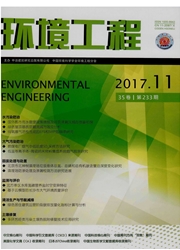

 中文摘要:
中文摘要:
再生水地下储存过程中增大了将有毒有害污染物质引入地下水的风险。针对再生水地下储存过程中重金属元素的变化规律开展研究。结果表明:对于碱土金属元素,K、Na主要受入渗驱替作用控制,Ca、Mg在模拟含水层中可发生混合沉淀;对于痕量金属元素,回灌后受混合作用影响,Zn、Fe、Cd、Cr、Hg浓度趋近于再生水中的浓度,As、Ba、Pb浓度高于地下水及再生水,但溶出后As、Ba、Pb的质量浓度处于GB/T 14848—93《地下水环境质量标准》Ⅲ类标准限值范围内,对水质影响不大。
 英文摘要:
英文摘要:
The process of the reclaimed water underground storage increases the risk of toxic and harmful pollutants leaking the into groundwater. This paper focused on the variation of heavy metals elements in the process. The results showed that: For alkaline earth metal elements, the concentration of K+ , Na + were mainly affected by infiltration and displacement. The variation of Ca2+ , Mg2+ indicated that cation exchange adsorption occurred in aquifer. For trace metals, the concentrations of Fe, Cd, Cr and Hg were closed to ones in reclaimed water by mixing action after reinjeetion. Concentration of As, Ba, and Pb were higher than that in reclaimed water and groundwater after reinjection. The final dissolution concentrations of As, Ba and Pb were lower than the lever Ⅲ of " Groundwater Environment Quality Standards" ( GB/T 14848-93 ) , indicating little influence on the groundwater quality.
 同期刊论文项目
同期刊论文项目
 同项目期刊论文
同项目期刊论文
 期刊信息
期刊信息
